9 European-inspired Tourist Cities in Canada

European-inspired Tourist Cities in Canada offer travelers a unique opportunity to experience the charm and elegance of Europe without crossing the Atlantic. These destinations are known for their distinctive architecture, rich cultural heritage, and inviting ambiance that echo the old-world allure of European capitals.
From cobblestone streets and quaint cafés to historic buildings and scenic town squares, these cities bring a slice of Europe to North America. Canada is home to nine standout locations where European influences—from French and Mediterranean to Central European styles—create unforgettable travel experiences.
What Makes Canadian Cities Feel European?
Canadian cities with a European vibe often display distinctive architectural styles, rich cultural traditions, and preserved historic streetscapes.
These elements create an atmosphere reminiscent of European towns, blending old-world charm with North American context.
Architectural Influences
Many Canadian cities feature historic architecture rooted in British colonial and French styles. Brick buildings with wrought-iron balconies, steep gables, and ornate cornices are common.
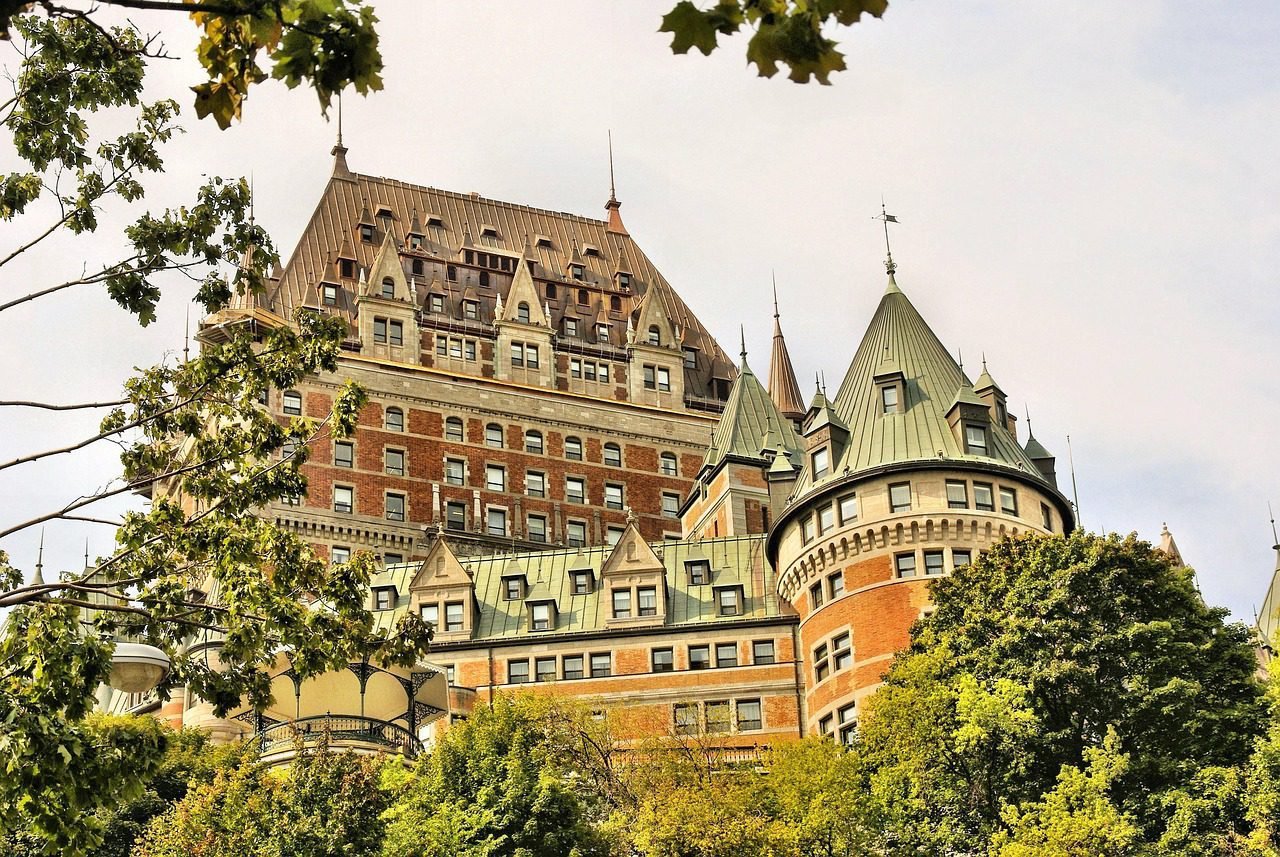
This is especially true in areas settled early by Europeans, where structures follow classic Parisian or British design principles.
Cobblestone streets complement the aesthetic, providing an authentic texture to neighborhoods. Buildings often include boutique shops with European-style décor, wrought-iron details, and colorful facades.
This architectural consistency invites visitors to explore on foot, much like in European city centers.
Cultural Elements and Traditions
The cultural fabric in these Canadian cities reflects strong European influences. Cafes that resemble Parisian bistros serve as social hubs, encouraging leisurely conversation and outdoor seating.
Local festivals often celebrate traditions from France, Britain, and other European countries.
Artisan markets and multilingual signage enhance the European feel. Communities maintain customs such as weekend markets, wine shops, and small bakeries offering fresh pastries, enriching the urban experience.
These cultural elements create a distinctly continental ambiance in everyday city life.
Historic Streetscapes
Historic districts preserve original city layouts with narrow, winding streets often lined by low-rise brick or stone buildings.
Cobblestone streets remain intact in many areas, enhancing the European atmosphere.
Street furniture like iron lampposts, benches, and planter boxes contribute to the aesthetic.
This urban design prioritizes pedestrian access, with small plazas and squares acting as gathering points. The result is an inviting, walkable environment echoing European town centers.
Quebec City: Old-World European Charm in Canada
Quebec City offers a distinctly European atmosphere through its well-preserved historic district, significant landmarks, and strong French cultural influence.
Visitors experience a blend of architecture, language, and heritage that reflects its colonial French roots.
Exploring Old Quebec
Old Quebec, a UNESCO World Heritage Site, is the heart of the city’s European vibe. Its narrow cobblestone streets and fortified walls date back to the 17th century. Walking through this district feels like stepping into an old French town.
Visitors often start at Place Royale, surrounded by buildings from the 1600s. The area features boutiques, cafés, and bistros that maintain a traditional style. The charm lies in the small squares and lively street life that echo centuries of history.
Historic Landmarks and Architecture
Château Frontenac stands as Quebec City’s most famous landmark, prominently overlooking the St. Lawrence River.

This grand hotel was built in the late 19th century and resembles a French château. It symbolizes the city’s historical importance and architectural grandeur.
Other key sites include the Notre-Dame Basilica, a National Historic Site known for its Gothic Revival style. Nearby City Hall also reflects 19th-century architecture.
The fortifications and gates of Old Quebec remain among the best-preserved in North America.
French Heritage and Culture
Quebec City is one of Canada’s oldest cities and the center of French-speaking culture in North America.
Its population predominantly uses French, preserving its language through daily life and official functions.
The city celebrates French traditions through festivals, cuisine, and arts. Visitors experience authentic Québécois culture in local markets, music events, and the distinct culinary scene featuring dishes like tourtière and poutine.
The French influence defines both the city’s identity and visitor experience.
Montreal: European Flair Meets Urban Vibe
Montreal blends historic charm with a dynamic city life. Its neighborhoods, café scenes, and cultural events offer visitors a distinct mix of European style and North American energy.
Historic Neighborhoods
Montreal’s Old Port and Plateau-Mont-Royal stand out for their Parisian architecture and cobblestone streets.
The Old Port features stone buildings dating back to the 17th century, alongside modern boutiques and galleries.
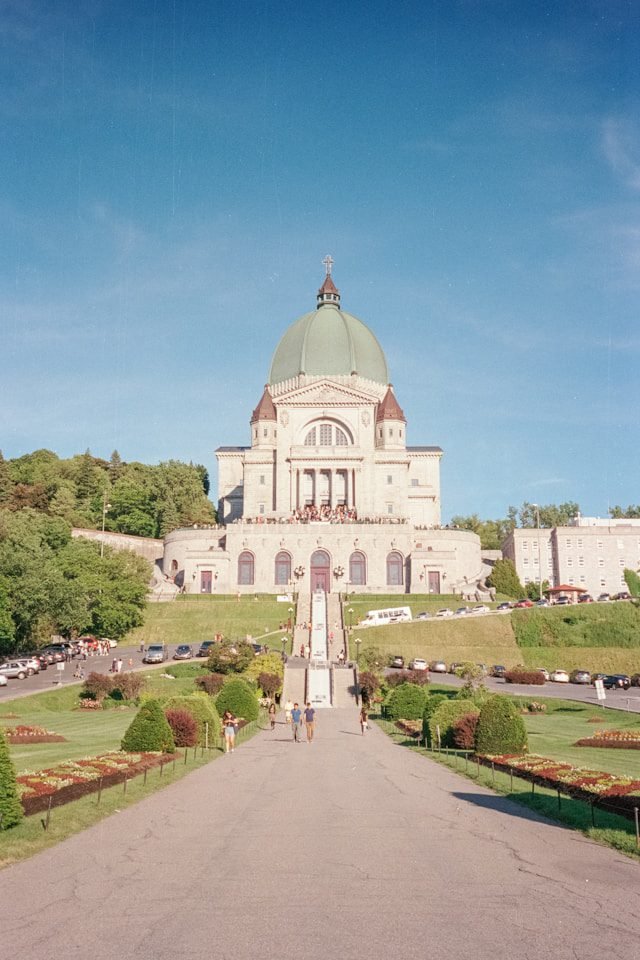
Plateau-Mont-Royal offers colorful murals, wrought-iron balconies, and vibrant streets. This area reflects a mix of French colonial influence and contemporary urban culture.
Visitors often stroll these neighborhoods to experience Montreal’s rich past while enjoying trendy shops and parks.
Café Culture and Culinary Delights
The café scene in Montreal echoes the classic French approach. Sidewalk cafes and bistros, especially around Saint-Denis Street, serve strong coffee and pastries in a relaxed setting.
Montreal’s cafés are popular for their laid-back social atmosphere, attracting locals and tourists alike.
Culinary highlights include bagels, poutine, and French-inspired dishes found in many restaurants. These eating spots combine European tradition with Quebec’s local flavors.
Lively Festivals and Arts
Montreal hosts numerous festivals reflecting its lively cultural scene. The Jazz Festival and Just for Laughs comedy festival are internationally recognized, drawing large crowds every summer.
Art installations and street performances animate neighborhoods year-round. The city’s commitment to arts and festivals showcases its blend of European cultural roots and a bold urban identity.
St. John’s: Colorful Heritage and Atlantic Views
St. John’s, Newfoundland and Labrador, is known for its vibrant architectural style and stunning coastal landscapes.
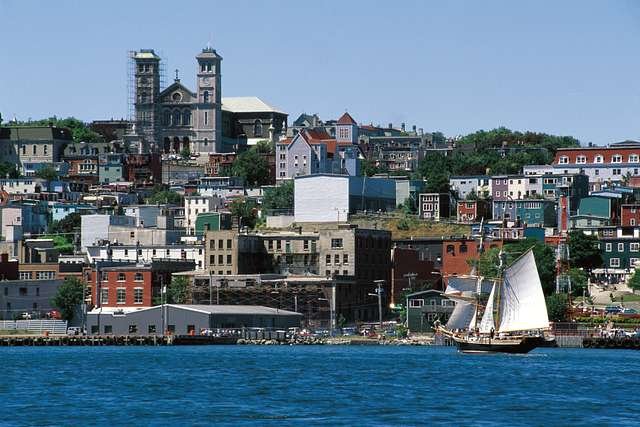
Its distinct streets and scenic spots offer visitors a strong sense of history alongside natural beauty.
Jellybean Row and Colourful Streets
The iconic Jellybean Row features a series of brightly painted row houses along Water Street.
These homes, dating back to the 18th century, create a striking visual contrast against the often grey Atlantic weather.
The colorful facades reflect the city’s maritime heritage and add charm to the urban environment.
Tourists often explore the neighborhood on foot, enjoying the small shops, cafes, and galleries nestled among the distinctive buildings.
The vibrancy of the streets emphasizes St. John’s unique cultural identity in Newfoundland and Labrador.
Lighthouses and Panoramic Vistas
St. John’s coastline is dotted with historic lighthouses, including the famous Cape Spear Lighthouse, the easternmost point in North America.

This site offers breathtaking views of the Atlantic Ocean and rugged shorelines.
From the lighthouse and nearby hiking trails, visitors can see expansive panoramas of St. John’s harbour and the surrounding landscape.
These elevated vantage points allow for clear, uninterrupted views that highlight the city’s connection to the sea.
Victoria: British Elegance on the West Coast
Victoria BC blends British charm with coastal beauty through its refined dining and distinctive shopping. The city’s historic architecture and groomed gardens reflect its colonial past and create a uniquely elegant atmosphere.
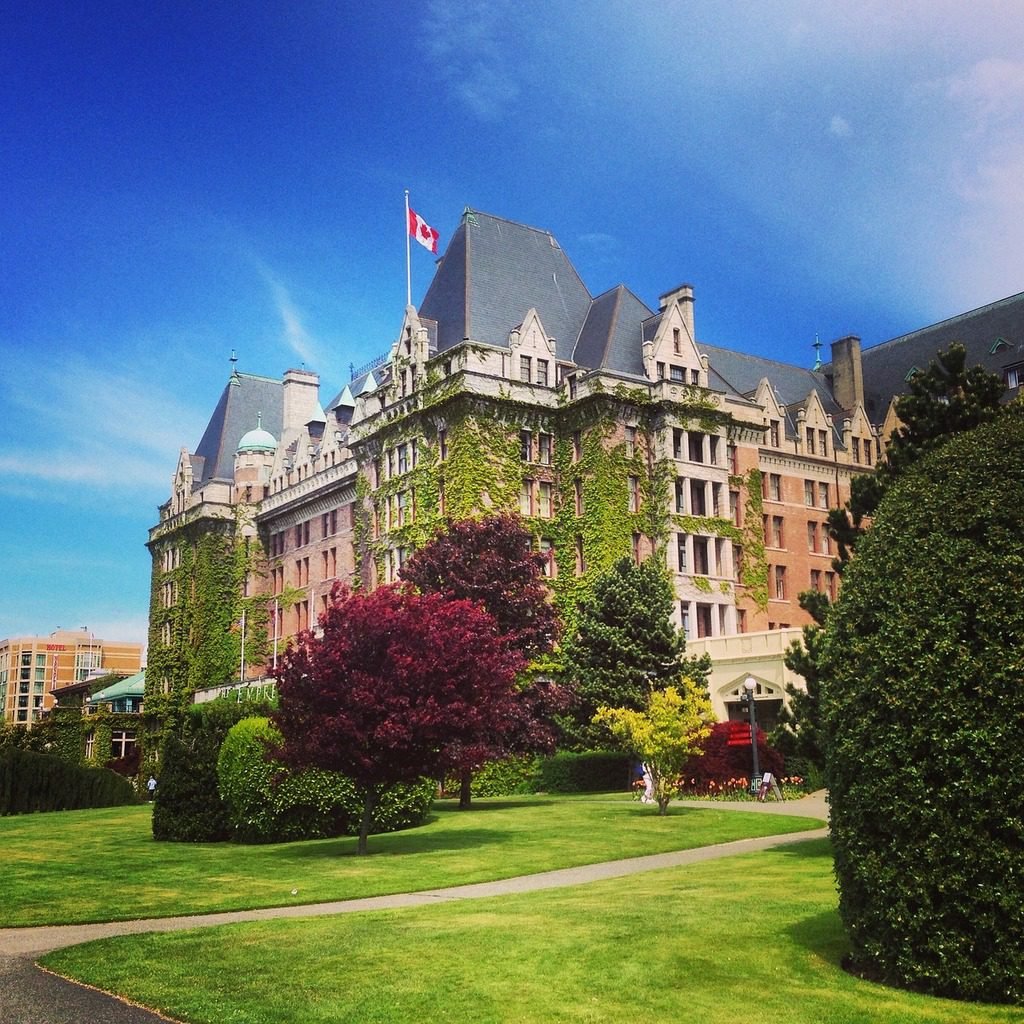
Afternoon Tea and Boutique Experiences
Victoria is renowned for its traditional afternoon tea, especially at the Fairmont Empress Hotel.
Visitors can enjoy a selection of fine teas, scones, clotted cream, and finger sandwiches in an elegant setting, embodying British customs.
Boutiques in downtown Victoria BC offer carefully curated items, from local artisan crafts to high-end fashion.
These shops provide a personalized experience, emphasizing quality and uniqueness. This mix appeals to those seeking both British-inspired souvenirs and contemporary Canadian designs.
Heritage Buildings and Gardens
Victoria’s cityscape is dotted with well-preserved historic buildings like the Parliament Buildings and Craigdarroch Castle. These sites showcase Victorian architecture and provide insight into the city’s colonial heritage.
The city’s gardens, including the famous Butchart Gardens nearby, complement its architectural elegance.
Meticulous landscaping and floral displays highlight the blend of natural beauty and British garden traditions that define Victoria’s appeal in British Columbia.
Lunenburg: A UNESCO World Heritage Gem
Lunenburg, located in Nova Scotia, is recognized as a UNESCO World Heritage Site for its well-preserved British colonial planning and architecture.
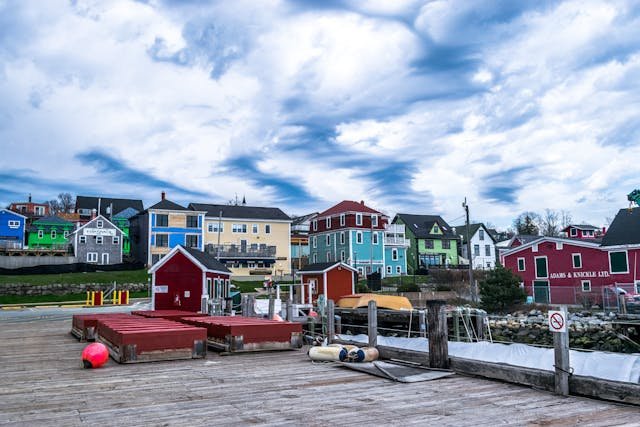
The town offers a blend of a picturesque waterfront and significant maritime heritage that defines its character.
Vibrant Waterfront and Boardwalk
The waterfront in Lunenburg is a lively area lined with colorful 18th-century buildings. Its boardwalk stretches along the harbor, providing unobstructed views of fishing boats and the Atlantic Ocean.
Visitors find shops, cafes, and galleries housed in restored structures, creating an authentic atmosphere. The area frequently hosts markets and festivals which celebrate local arts and seafood.
The well-maintained wooden boardwalk connects key points in the town and is accessible year-round.
Fascinating Maritime History
Lunenburg’s National Historic Site status highlights its importance in Canadian maritime history.
It has long been a center for fishing and shipbuilding, with the renowned Bluenose II schooner based here.
The Maritime Museum of the Atlantic displays artifacts related to fishing, shipbuilding, and the area’s coastal life.
Many preserved buildings and working docks reflect centuries of seafaring tradition. The heritage is visible in the town’s layout and architecture, emphasizing its role in Nova Scotia’s economic and cultural development.
Louisbourg: Exploring Colonial Fortifications
Louisbourg on Cape Breton Island, Nova Scotia, showcases meticulously restored colonial architecture that reflects its 18th-century French military past.
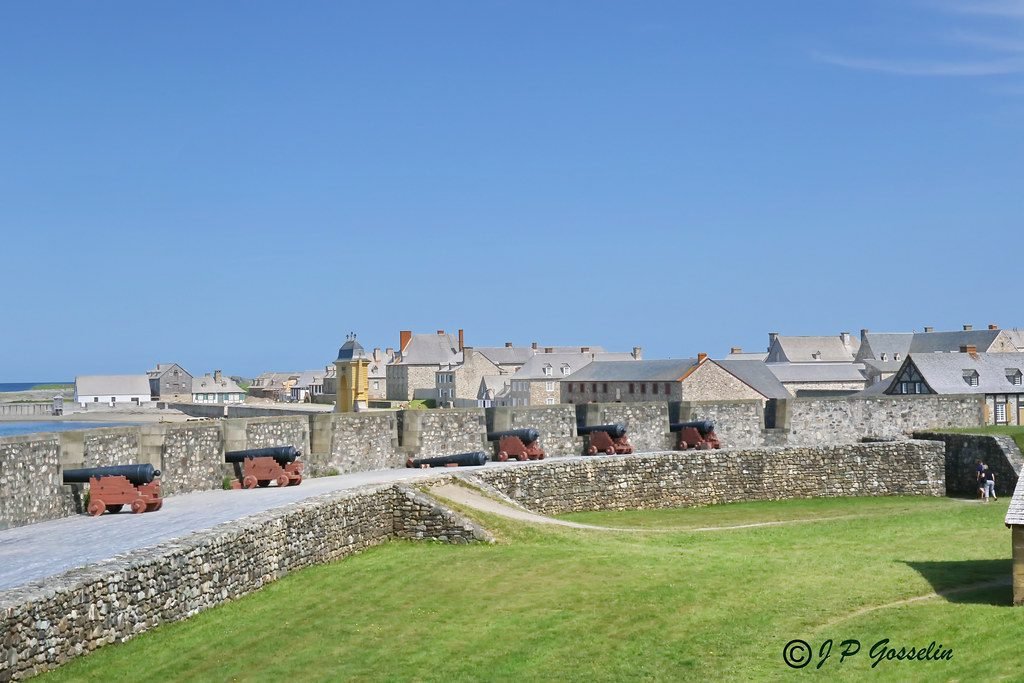
Its fortified walls and period buildings offer a detailed view of European colonial life adapted to the New World’s Atlantic coast.
Fortress of Louisbourg National Historic Site
The Fortress of Louisbourg is a reconstructed 18th-century French stronghold, significant for its role in colonial conflicts between Britain and France.
Visitors can walk along its massive stone walls, bastions, and moats, which highlight military engineering of the period.
The site includes reconstructed barracks, powder magazines, and warehouses. Signage and guided tours explain strategic defenses and the daily lives of soldiers within the fortress.
It remains one of the largest historical fort restorations in North America, offering insight into European fortification methods transplanted to Canada.
Living History and European Décor
Actors in period costume recreate the daily routines of Louisbourg’s residents. Craftsmen demonstrate blacksmithing, cooking, and weaving using tools and techniques from the 1700s.
This living history approach helps visitors experience a European-style colonial town.
Buildings are restored with careful attention to architectural details such as Dutch gables and steep roofs common in French colonial towns.
Interiors feature furniture and decorations sourced or reproduced to match the highland and French styles from Louisbourg’s era.
This focus preserves the authenticity of the European influence on the settlement.
Charlottetown: The Victorian Capital
Charlottetown, Prince Edward Island, reflects Victorian-era charm through its architecture and vibrant cultural life.
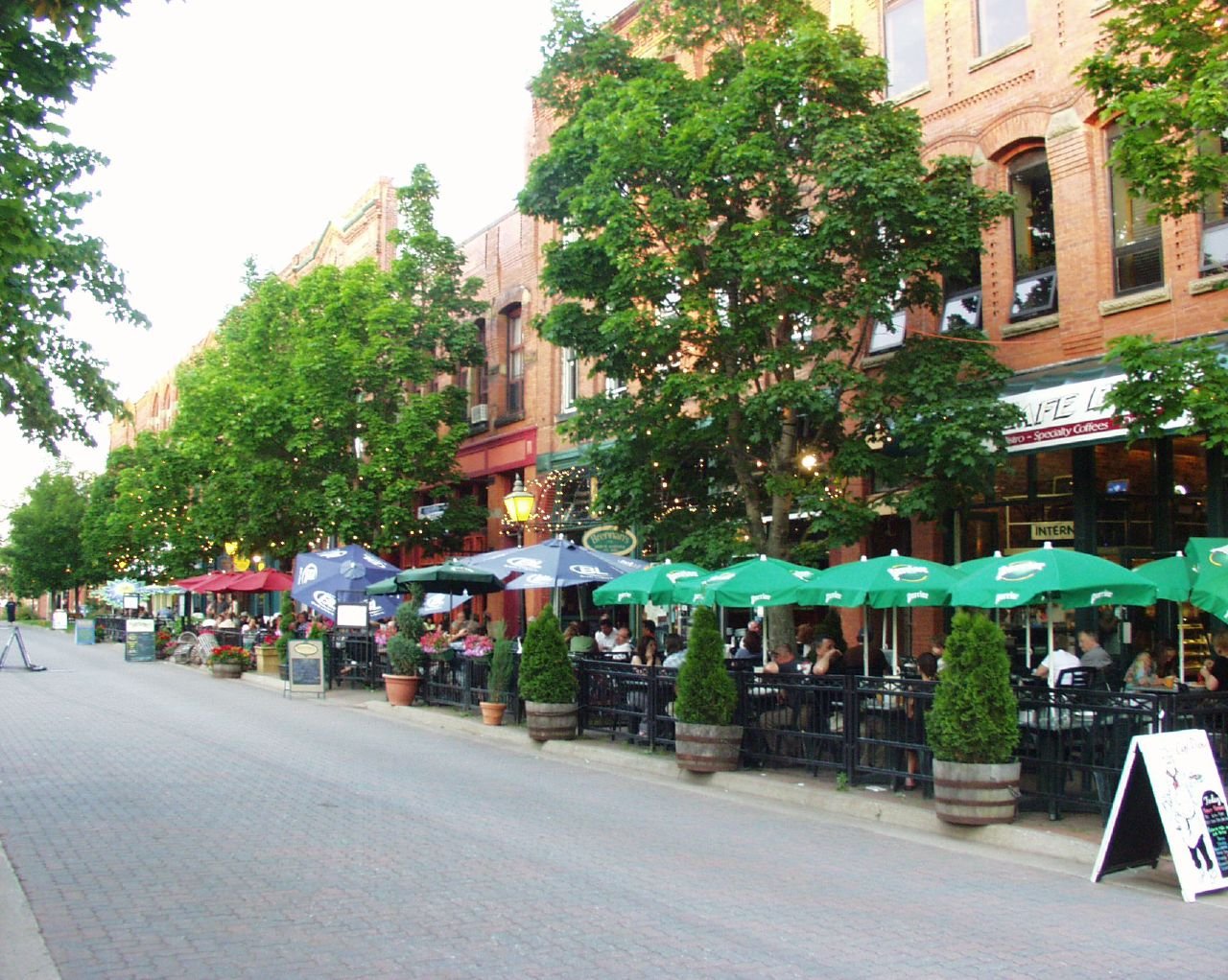
Visitors find a mix of historic landmarks and dynamic festivals that highlight its rich heritage and community spirit.
Charming Downtown and Landmarks
The downtown area of Charlottetown features well-preserved Victorian buildings, including the iconic Charlottetown City Hall with its distinctive clock tower.
Strolling through the streets, visitors encounter shops, cafes, and galleries housed in colorful heritage structures.
Important landmarks include Victoria Row, a pedestrian street lined with restaurants and boutiques.
The nearby Confederation Centre of the Arts offers a blend of historic significance and modern culture, showcasing the city’s role in Canada’s founding.
Cultural Experiences and Festivals
Charlottetown hosts numerous lively festivals, most notably the annual Charlottetown Festival, which celebrates Canadian theatre with large-scale productions. This event draws crowds from across the country and highlights local talent.
Other events like the PEI International Shellfish Festival and George Street Festival provide chances to experience regional food, music, and art.
These festivals emphasize the city’s community engagement and strong cultural identity.
Merrickville: Ontario’s Quaint Canal Village
Merrickville is known for its rich history and charming small-town atmosphere.

Visitors appreciate the well-preserved architecture and the unique shopping experiences that reflect the village’s heritage.
Historic Streets and Boutique Shops
The streets of Merrickville are lined with carefully maintained historic buildings dating back to the 19th century.
Many structures originate from the village’s early days as a canal town on the Rideau Canal. These buildings now host a variety of boutique shops, galleries, and artisan studios.
Shoppers can find handcrafted goods, local art, and specialty foods. The village’s main street offers a mix of antique stores and unique boutiques, making it a destination for those interested in culture and craftsmanship.
The pedestrian-friendly layout enhances the experience, inviting slow exploration of Merrickville’s character.
Stratford: Theatre, Gardens, and European Ambience
Stratford blends dramatic arts with charming outdoor spaces that give it a distinct European feel. Visitors find a balance of cultural events and quiet spots to relax in boutique-filled streets.
Shakespearean Legacy and Festival
Stratford is best known for the Stratford Festival, a premier theatre event focusing on Shakespearean plays.
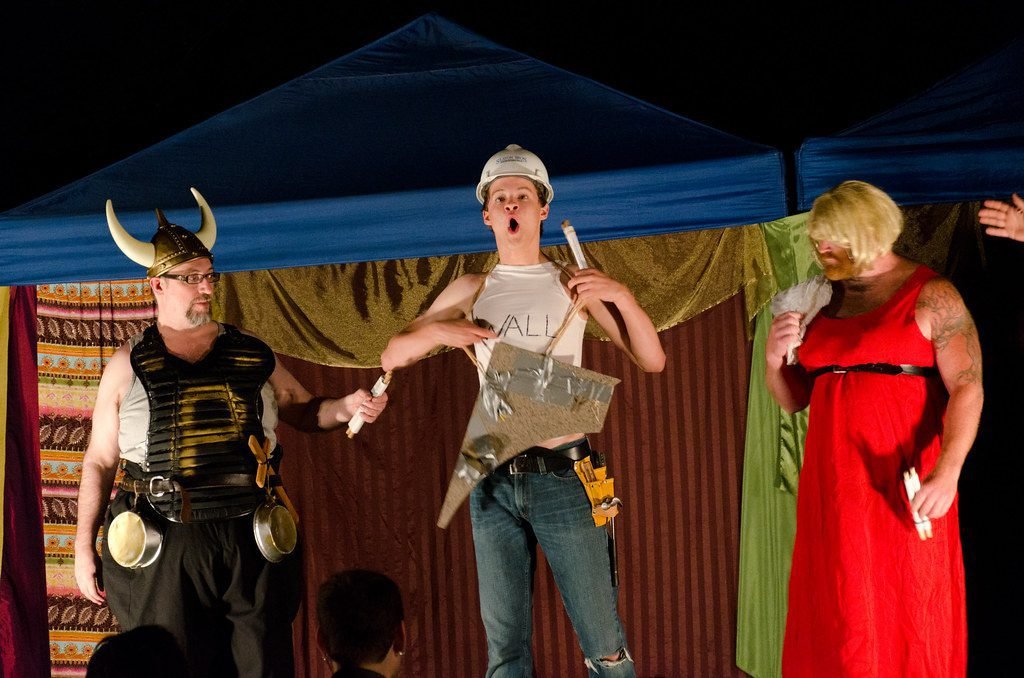
It draws international actors and audiences each year, staging productions in venues like the Festival Theatre and Tom Patterson Theatre.
The festival runs from April to October, offering a mix of classic and contemporary works. It highlights Shakespeare’s influence on culture and draws theatre enthusiasts seeking authentic drama experiences.
Beyond performances, Stratford’s theatre district hosts workshops and lectures, enriching visitors’ understanding of Shakespearean literature.
This focus on heritage supports local economy and maintains Stratford’s reputation as a cultural hub.
Picturesque Parks and Cafés
Stratford is home to well-maintained parks like Shakespearean Gardens, featuring flowers, sculptures, and paths that evoke European garden design. These spaces offer peaceful breaks between theatre visits.
The town’s streets are lined with boutique shops and cafes known for artisanal goods and local cuisine.
Cafés often have outdoor seating, perfect for enjoying the town’s mild summers and urban scenery.
These elements together create a small-town European vibe, where cultural events meet leisurely strolls past gardens and specialized stores.
This atmosphere appeals to visitors seeking both artistic engagement and relaxed afternoons.
Elora: Scenic Views and Old-World Appeal
Elora offers a blend of natural beauty and historic charm. The town is known for its stunning river gorge and well-preserved stone buildings that reflect European architectural styles.
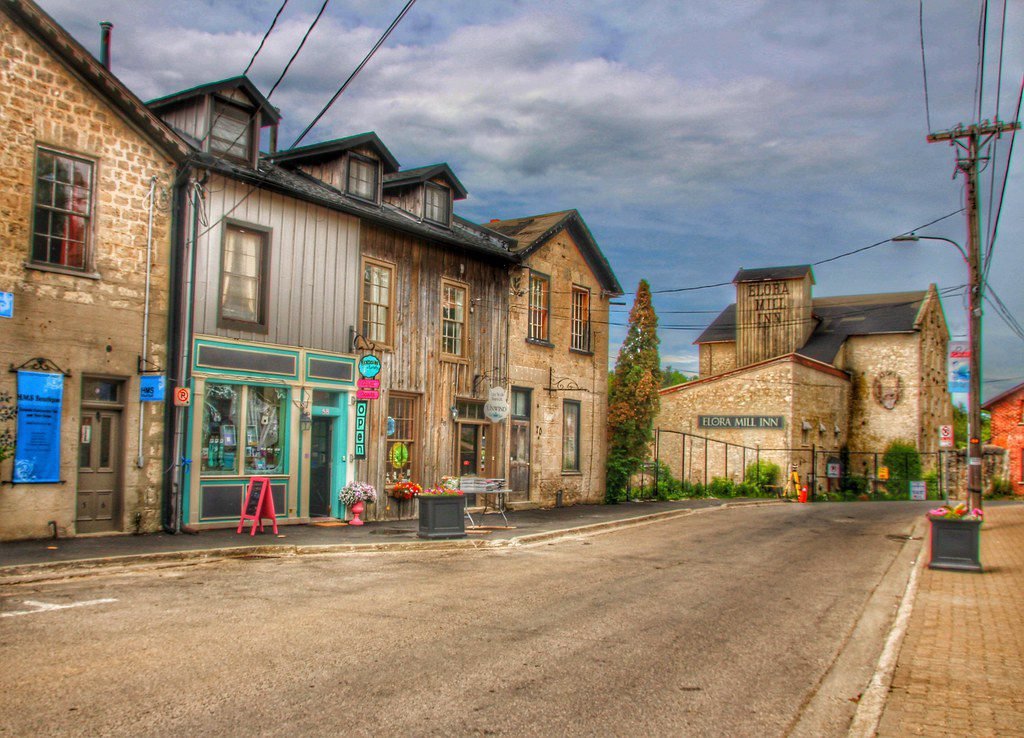
Visitors often come to admire these features while enjoying a peaceful, small-town atmosphere.
Stone Architecture and Riverside Walks
Elora’s stone architecture dates back to the 19th century and includes structures like the Elora Mill and old stone churches.
These buildings use local limestone, giving them a distinctive, durable character reminiscent of small European villages.
The Elora Gorge Conservation Area provides breathtaking views along the Grand River. Walking trails follow the riverbank, offering access to scenic overlooks and opportunities for photography.
This mix of natural beauty and historic stonework creates a picturesque setting that attracts many tourists year-round.
Niagara-on-the-Lake: Vineyards and Colonial Grace
Niagara-on-the-Lake blends historic charm with a flourishing wine culture.
Its colonial architecture frames streets lined with boutique shops, while the surrounding vineyards offer a distinct Canadian take on European wine country.
Winery Tours in a European Setting
The town is surrounded by numerous vineyards known for producing ice wine and other varietals. Many estates provide guided tours, explaining grape varieties, harvesting methods, and wine-making processes.
Visitors can sample wines in tasting rooms designed to mirror European vineyard aesthetics, with rustic wood and stone elements.
Popular wineries include Peller Estates and Inniskillin, both respected for quality and atmosphere.
Seasonal events such as grape stomping and harvest festivals reflect traditions often seen in European wine regions.
Historic Downtown and Boutique Shops
Niagara-on-the-Lake’s downtown features well-preserved 19th-century buildings offering a colonial atmosphere.
Streets are lined with boutiques specializing in local crafts, including hand-made jewelry, art, and gourmet food products.
The small shops emphasize quality and unique finds rather than mass-produced goods. Clothing boutiques offer specialty fashion that complements the town’s refined atmosphere.
Cafés and bakeries also occupy historic storefronts, adding to the walkable, intimate experience that distinguishes the town from larger urban centers.
Other Notable European-Inspired Sightseeing in Canada
Several Canadian regions display distinct European cultural influences that shape their architecture, lifestyle, and natural surroundings.
These places offer rich historical and scenic experiences, blending heritage with natural beauty.
Halifax and East Coast Influences
Halifax reflects its strong British colonial past through Georgian and Victorian architecture, visible in structures like the Halifax Town Clock and Public Gardens.
The city’s waterfront is lined with historic buildings that recall its role as a major Atlantic port.
The East Coast vibe is marked by a blend of maritime culture and European traditions, especially Celtic and Acadian. Visitors experience this in local festivals, seafood cuisine, and the rugged coastal landscapes that define the region.
Canadian Rockies Retreats
The Canadian Rockies combine European alpine aesthetics with stunning natural parks such as Banff and Jasper.
Towns like Banff and Canmore showcase chalet-style buildings that echo Swiss and Austrian architecture, enhancing the mountain village feel.
This area is prized for its natural beauty, including turquoise lakes, dense forests, and snow-capped peaks.
It serves both as a retreat for outdoor activities and as a showcase of European-inspired mountain culture in Canada.
Tips for Experiencing Canada’s European-Influenced Destinations
Visitors should plan their trips around local weather patterns and major events. Knowing the best times to visit helps avoid crowds and maximize enjoyment.
Exploring key sights and activities offers a world-class experience, while sampling regional cuisine highlights authentic flavors.
Best Times to Visit
Spring and early fall are ideal for visiting European-Style cities in Canada.
These seasons provide mild weather and fewer tourists, making it easier to explore tranquil streets and parks.
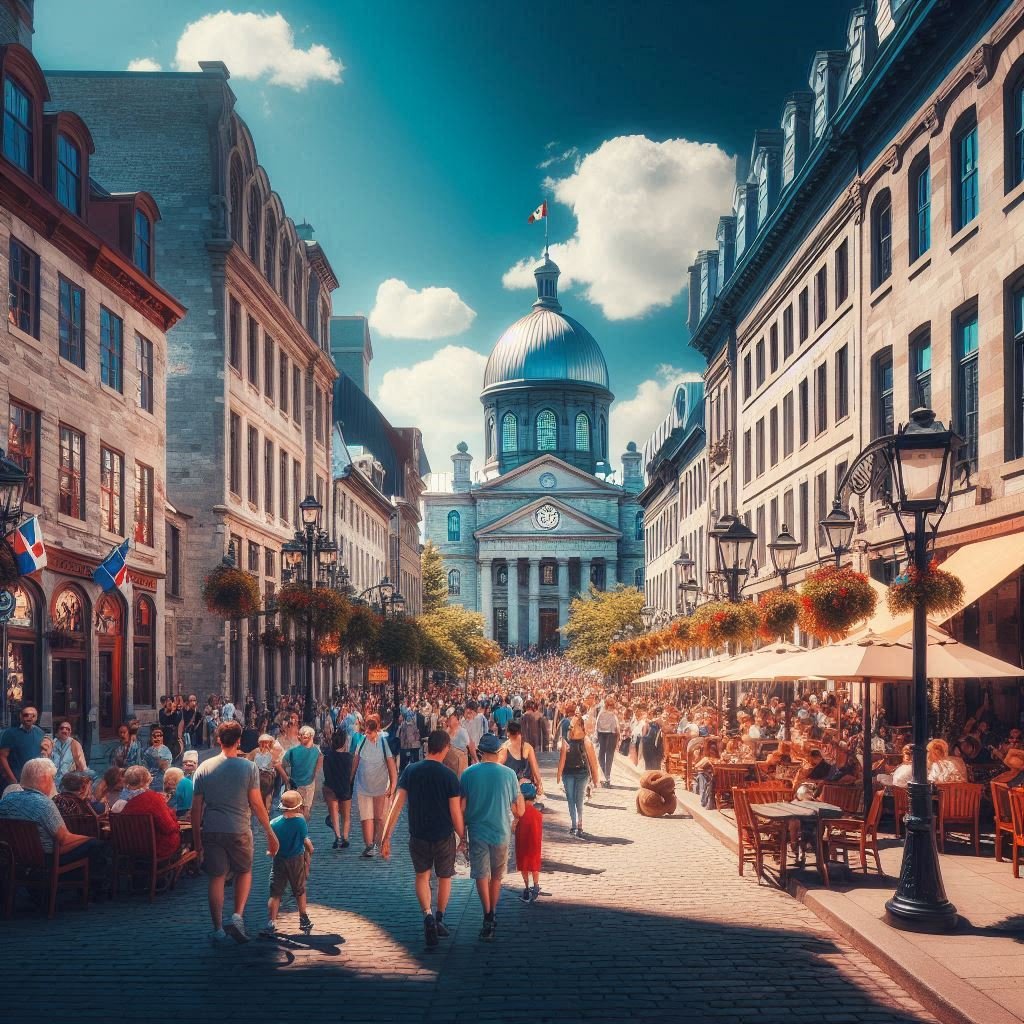
Summer attracts more visitors due to festivals and outdoor events but brings larger crowds. Winter can be less crowded and offers unique seasonal activities, though some attractions may have limited hours.
Checking local event calendars is useful. For example, Montreal’s European-style old town flourishes during summer festivals, while Quebec City’s Christmas Market draws visitors in December with a festive ambiance.
Must-See Sights and Activities
Each city features historic districts reminiscent of European architecture. Strolling through cobblestone streets in places like Lunenburg or Old Montreal highlights authentic European charm.
World-class museums and galleries offer cultural depth. Halifax’s waterfront and Victoria’s inner harbour are perfect for scenic walks and boat tours.
Cycling or walking tours provide a tranquil way to discover hidden neighborhoods and gardens. City squares, markets, and cathedrals are often the centerpiece of these tours.
Local Cuisine and Cafés
Sampling traditional European-style dishes enriches the travel experience. Many cities boast cafés serving French pastries, Italian espresso, or German sausages.
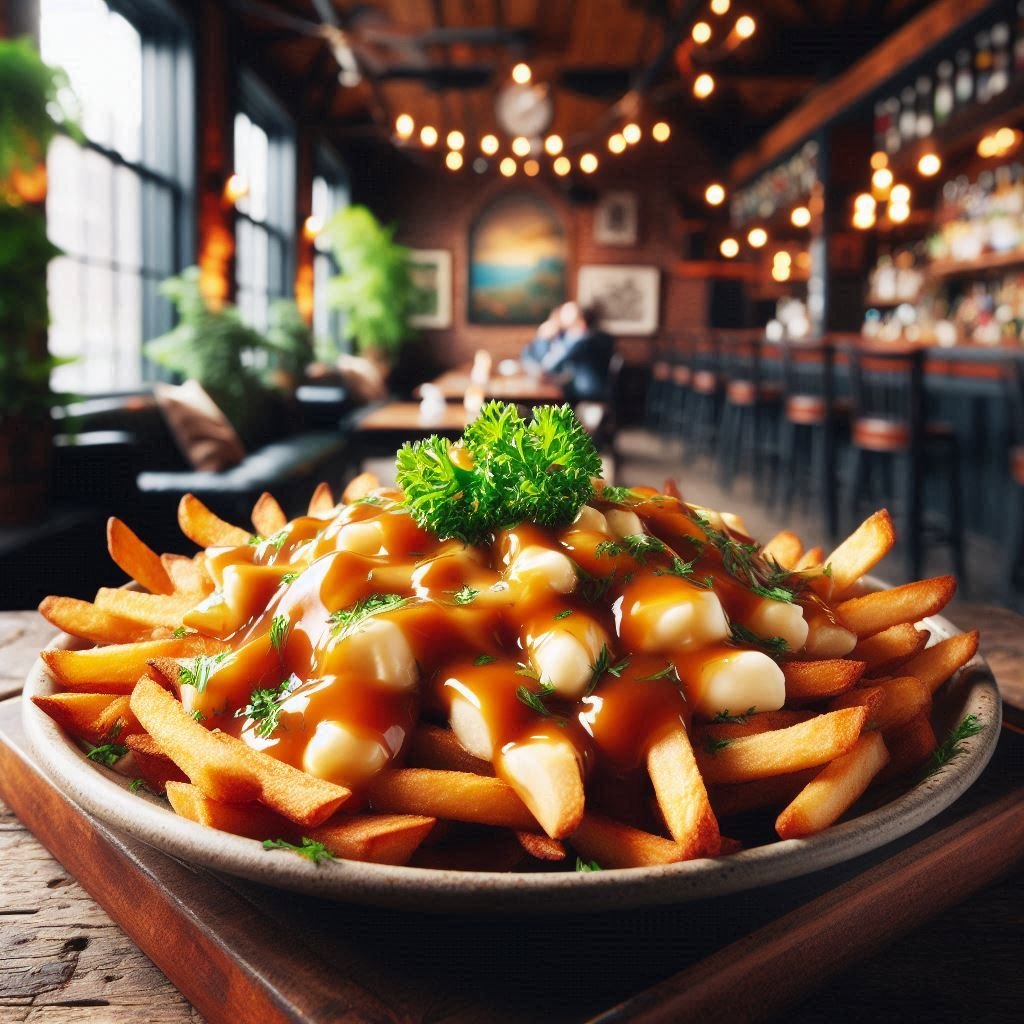
Local specialties, such as Quebec’s poutine or Nova Scotia’s seafood, complement the European influences. Breakfast and afternoon tea spots often feature authentic recipes brought by settlers.
Visitors will find that dining in small bistros or street markets offers a local, intimate atmosphere that contrasts with larger tourist venues. Trying suggested pairings of wine or beer enhances the meal.
FAQs
What are the 9 European-Flavored Tourist Cities in Canada?
Canada offers a unique blend of cultures, and many cities across the country are inspired by European traditions and architecture. Some of the top European-inspired tourist cities in Canada include Old Quebec, Niagara-on-the-Lake, Stratford, Victoria in British Columbia, Montreal, St. John’s in Newfoundland and Labrador, Elora, Halifax, and Ottawa in Ontario.
These cities offer a taste of Europe across the Atlantic with their historic architecture, cultural festivals, and European flair.
Why is Old Quebec considered a must-visit Continental-influenced city?
Old Quebec is a UNESCO World Heritage Site known for its cobblestone streets, historic architecture, and European flair.
The city is reminiscent of a small French village, complete with charming cafes, boutiques, and the iconic Château Frontenac. Visiting Quebec City gives tourists the feeling of stepping back in time to a French-speaking European town.
How does Niagara-on-the-Lake offer a like Europe experience?
Niagara-on-the-Lake, located near Niagara Falls, is famous for its beautiful gardens, vineyards, and quaint small towns atmosphere.
Visitors can enjoy afternoon tea at elegant tea rooms and explore wineries that offer some of Canada’s best craft beer and wines, all while taking in the picturesque surroundings that feel like a European countryside.
What makes Stratford a European-Themed destination?
Stratford in Ontario is renowned for its annual Shakespeare Festival, attracting theatre enthusiasts from around the world.
The city’s Victorian-style architecture, elegant gardens, and picturesque streets give it a distinctly European charm reminiscent of quaint English towns.
Its riverside setting along the Avon River, complete with charming footbridges and swan-dotted waters, further enhances the storybook atmosphere that mirrors many scenic destinations in Europe.
Beyond its theatrical appeal, Stratford offers an inviting downtown filled with boutique shops, artisanal bakeries, and cozy cafés that evoke the feel of a small European village.
Whether you’re enjoying a leisurely stroll through its manicured parks or dining al fresco in a flower-lined courtyard, Stratford delivers a cultural and visual experience that feels both timeless and authentically European-inspired.




